July Gardening Tips and To-Dos for the Pacific Northwest
July gardening in the Pacific Northwest always feels like the reward for all those springtime chores. The dahlias are opening up one by one, the snapdragons are putting on a show, and I can hear the hum of bees every time I step outside.
Most mornings, I wander through the garden with my iced latte in hand, checking on what’s blooming and what needs a little extra attention.
Of course, as much as I’d love to just admire the view, there’s still plenty on my July gardening to-do list to keep everything happy through these warm summer days. From staying ahead of the watering to cutting back spent blooms, there are always small tasks that make a big difference this time of year.
So I thought I’d share what I’m working on in my own Pacific Northwest garden right now. Here are my July gardening tips to help you keep your garden thriving all month long.
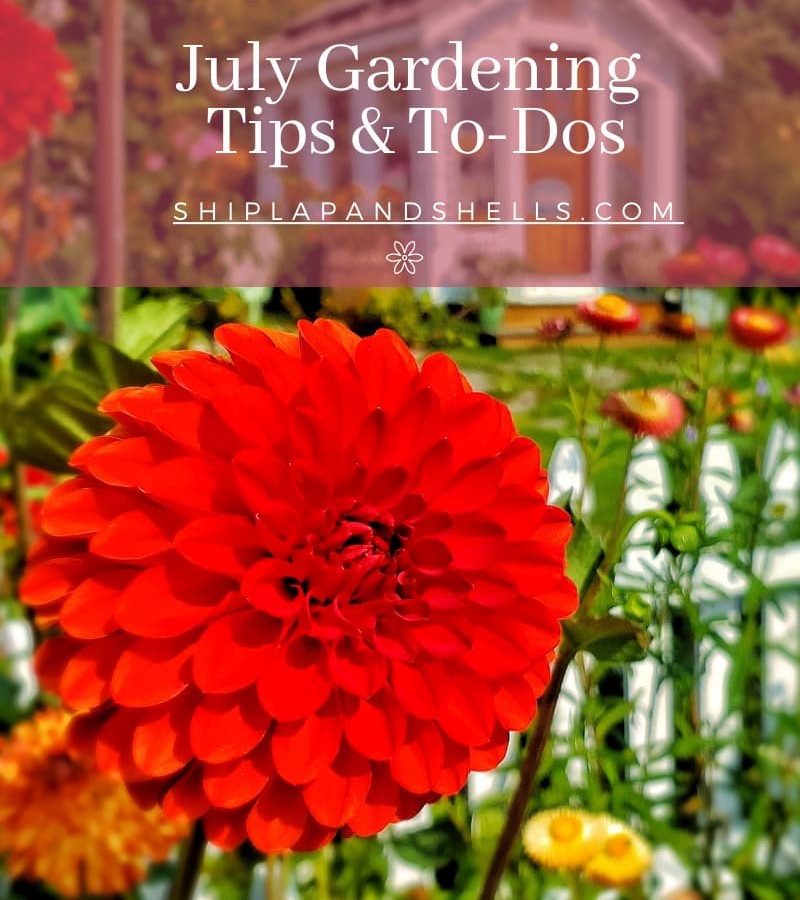
As an Amazon affiliate, I earn a commission from qualifying purchases at no additional cost to you. My blog also features other affiliate links for your convenience. Click here to read my privacy policy.

Assess Soil Moisture and Watering

July gardening in the Pacific Northwest usually means plenty of sunshine, which means keeping an eye on soil moisture is key.
I make a habit of checking my garden beds regularly, especially when we get those stretches of dry weather. New plantings and container gardens dry out even faster in the summer heat, so they’ll need a little extra attention.
If you haven’t already, this is a great time to consider using soaker hoses or drip irrigation systems. I love how they deliver water right where it’s needed, directly to the base of the plants, which helps encourage deeper root growth and cuts down on wasted water.
Plus, it saves me from standing out there with a hose when I’d rather be relaxing on the patio with my iced latte!
Morning is still the best time to water, giving plants plenty of time to soak it up before the heat of the day. But if evening watering is your only option, just aim for the roots and try to keep the foliage dry to help prevent disease and mildew.
SHOP soaker hoses or drip irrigation systems.
Flower Maintenance
By July, I’m in full-on maintenance mode out in the garden. A little regular care keeps everything looking its best and helps encourage even more blooms as the season goes on.
Roses

I’m always checking my roses this time of year. Deadheading spent blooms with clean pruners keeps them producing fresh flowers, and I make sure to give them a monthly dose of rose fertilizer to keep them happy and productive.
There’s nothing better than watching those fresh buds start to open again!
SHOP clean pruners and rose fertilizer.
Freshen Up Garden Annuals
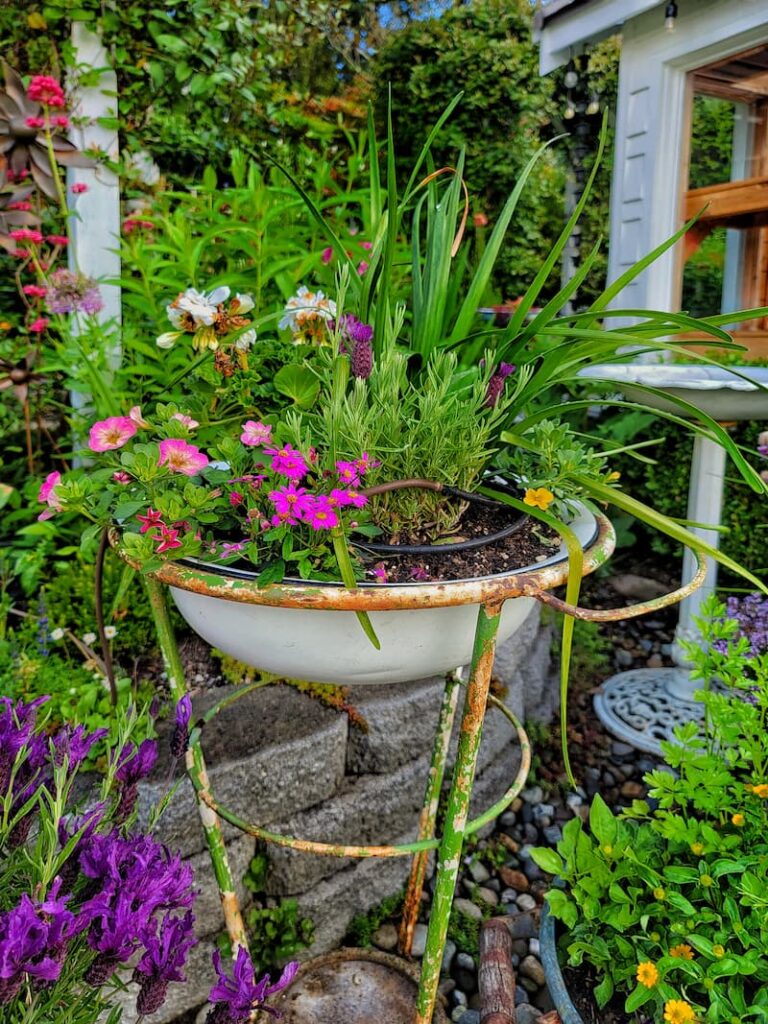
Annuals can be a bit high-maintenance in the summer heat. I deadhead them regularly to keep new blooms coming, but even with the best care, sometimes slugs, dehydration, or a hot spell can take their toll.
If an annual starts to fade or completely gives up, don’t hesitate to replace it with a fresh new plant. It keeps the garden looking vibrant all season long.
Prune, Cut Back, and Harvest Garden Plants
Spring-Flowering Bulb Foliage
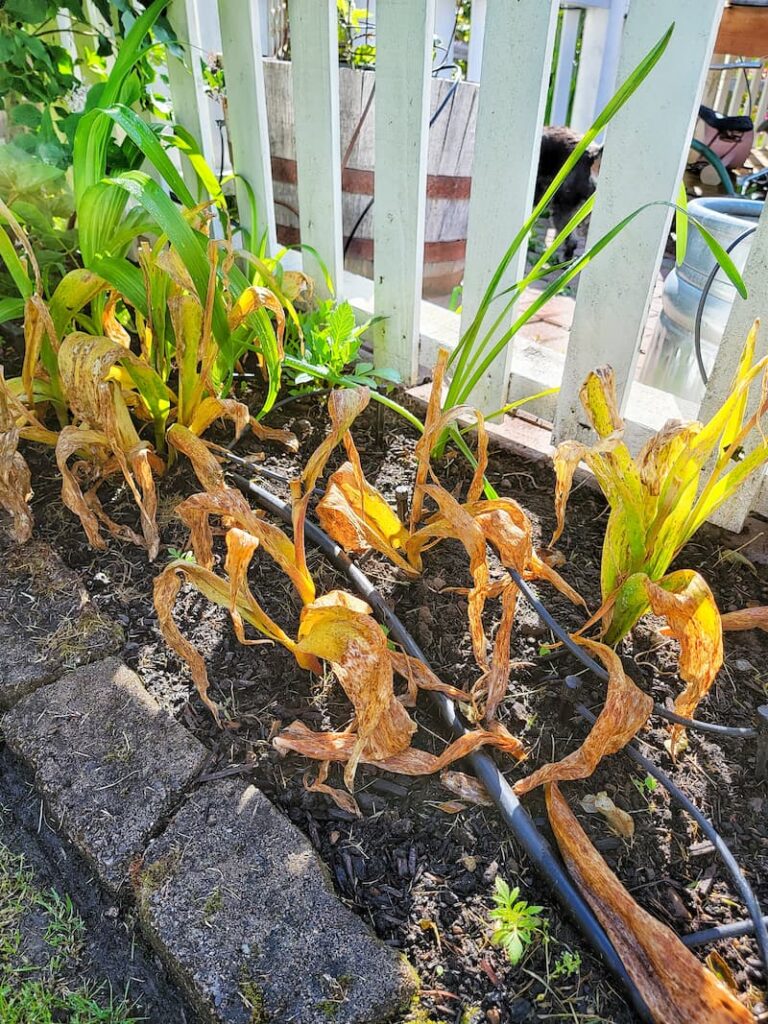
Once the foliage on your spring bulbs (like daffodils and tulips) has browned and dried up, it’s safe to cut it back. I pulled most of mine in June, but there are always a few stragglers I’m still cleaning up in early July.
Delphiniums and Phlox
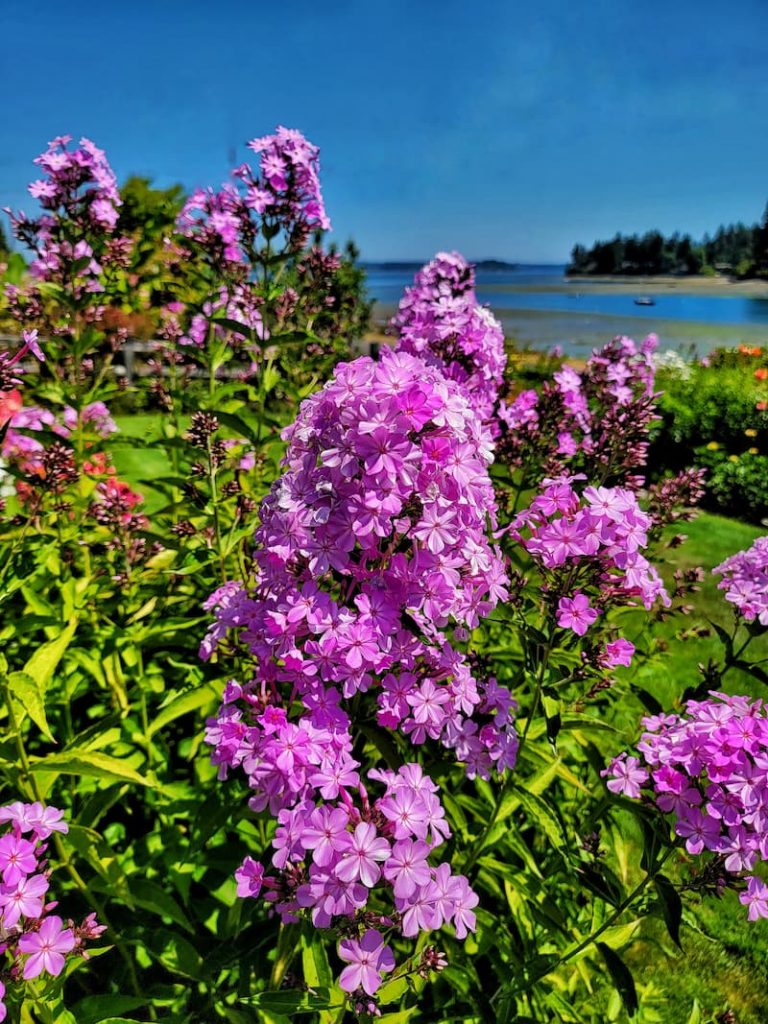
After their first big bloom, I give my delphiniums and phlox a light fertilizer and cut back the spent flowers. With a little luck, they’ll reward me with a second round of blooms later in the season.
Fruit Trees
Keep an eye out for suckers growing from the base or trunk of your fruit trees. I usually just pull the smaller ones by hand or clip them off with my pruners to keep the energy focused on producing healthy fruit.
SHOP garden pruners or gardening shears.
Harvest Fruits, Vegetables, and Flowers
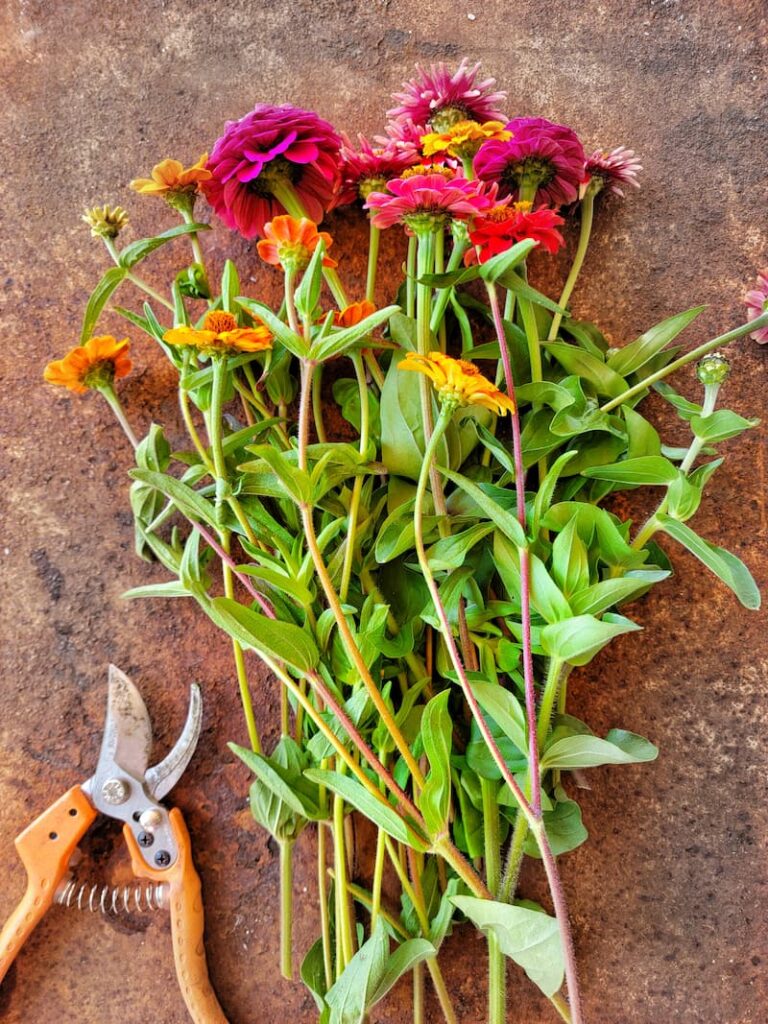
Remember to keep harvesting! Picking fruits, veggies, and cut flowers regularly not only keeps your garden tidy but also encourages new growth and helps prevent disease.
I always try to harvest veggies when they’re just ripe. They taste so much better before becoming overly mature and losing their flavor.
Prune Summer-Blooming Shrubs
After your summer-blooming shrubs have finished flowering, it’s a good time to lightly prune and shape them. I remove any dead or damaged branches at the same time to keep them healthy going into late summer.
Keep Weeds Under Control
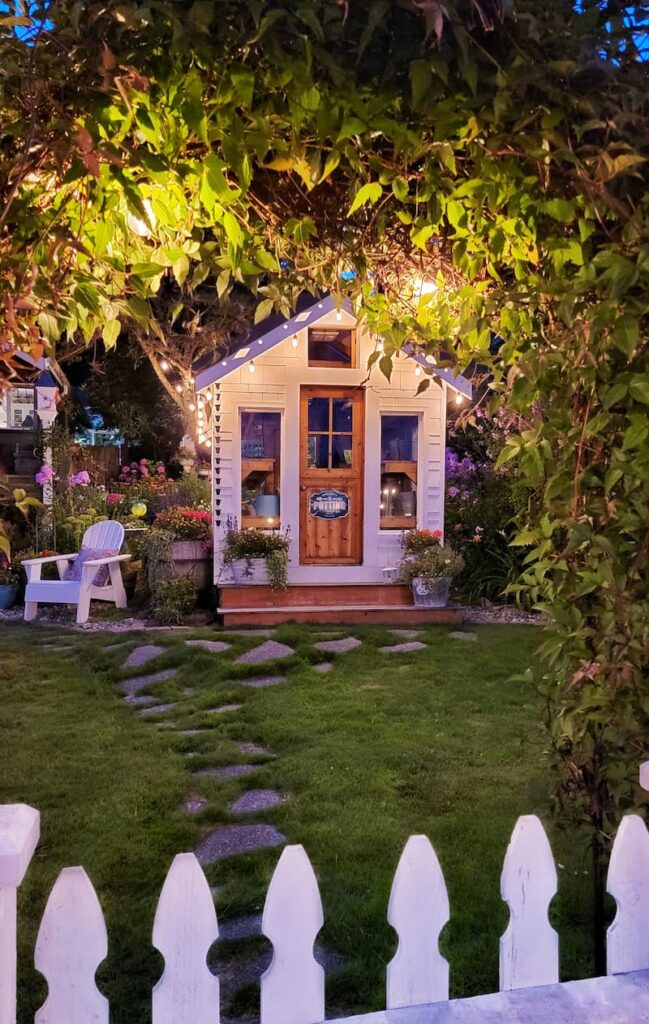
Let’s be honest — weeding isn’t exactly my favorite summer garden task, but it’s one of the most important. In July, weeds seem to pop up overnight, and if you don’t stay on top of them, they’ll happily steal water and nutrients from your flowers and veggies.
One thing that’s made my life a lot easier is adding a layer of mulch around the garden. Not only does it help keep moisture in during those hot summer days, but it also does a pretty good job of keeping weeds from taking over.
If you’ve got a big weeding session ahead, try tackling it after a good rain (or give the area a deep watering first). Wet soil makes it so much easier to pull the weeds out, roots and all. And if you’re short on time, I’ll at least snip off the tops before they go to seed and make the problem even worse.
Monitor for Common Pests and Diseases
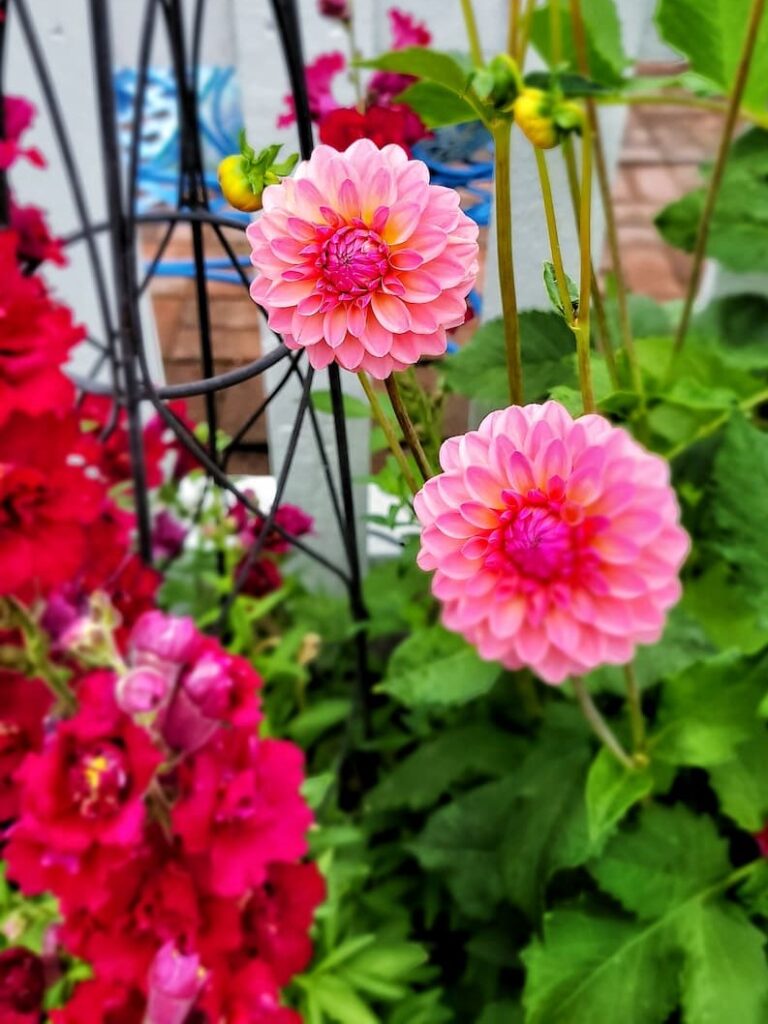
July gardening in the Pacific Northwest isn’t all sunshine and blooms. This is also the time when pests and diseases seem to show up right when you’re trying to enjoy your hard work. I make a habit of walking through the garden every morning or evening, coffee (or iced latte!) in hand, just to keep an eye out for anything unusual.
Be on the lookout for troublemakers like aphids, spider mites, powdery mildew, black spot on roses, tomato hornworms, and Japanese beetles. The sooner you spot them, the easier they are to control.
I like to stick with organic methods when I can. Insecticidal soap sprays work well for smaller pests, and introducing beneficial bugs like ladybugs can help keep populations in check naturally.
SHOP insecticidal soap spray.
Slug Control
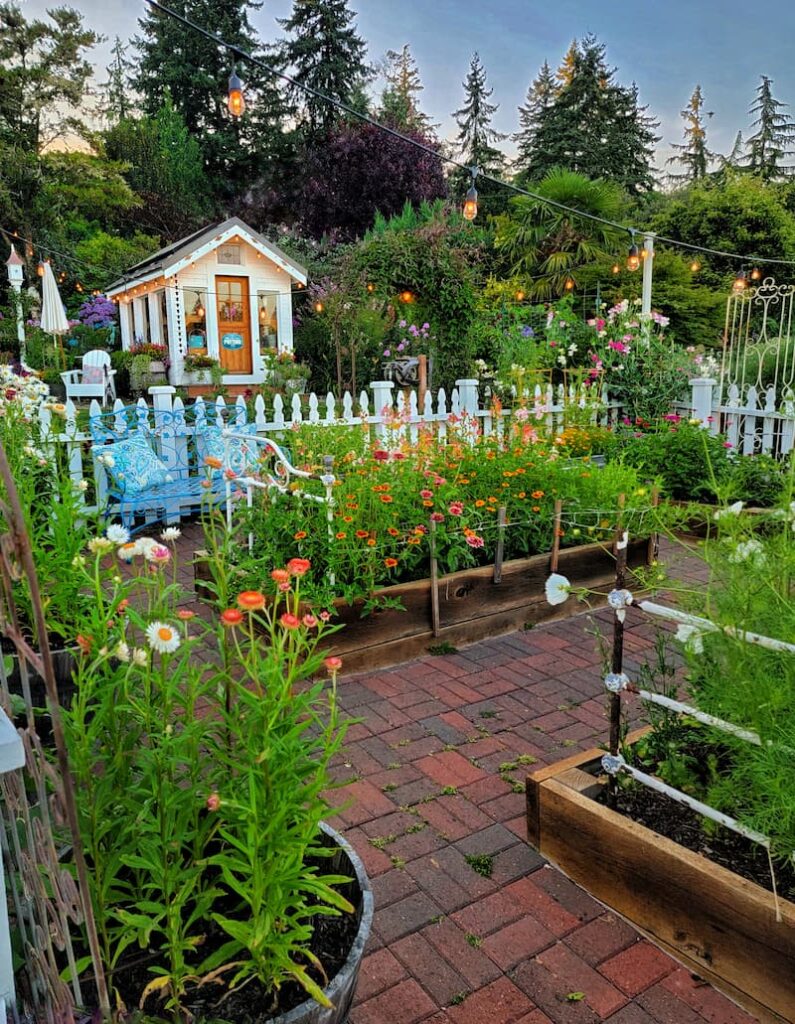
And of course — the slugs. They love our PNW gardens just a little too much, especially with all the moisture we get. I always check under flowerpots, rocks, dense foliage, and even under those big dahlia leaves where they like to hide during the day.
But as soon as the sun goes down, they come out for dinner.
I stay on top of slug control by regularly applying bait (I personally use Sluggo because it’s safe for pets and wildlife). But I won’t lie, there have been plenty of evenings when you’ll find me out there with a flashlight and a trusty pair of tongs, doing a little slug hunting. If you’ve got the patience, a small dish of beer works too — they can’t seem to resist it.
SHOP Sluggo slug bait.
Promote Air Circulation
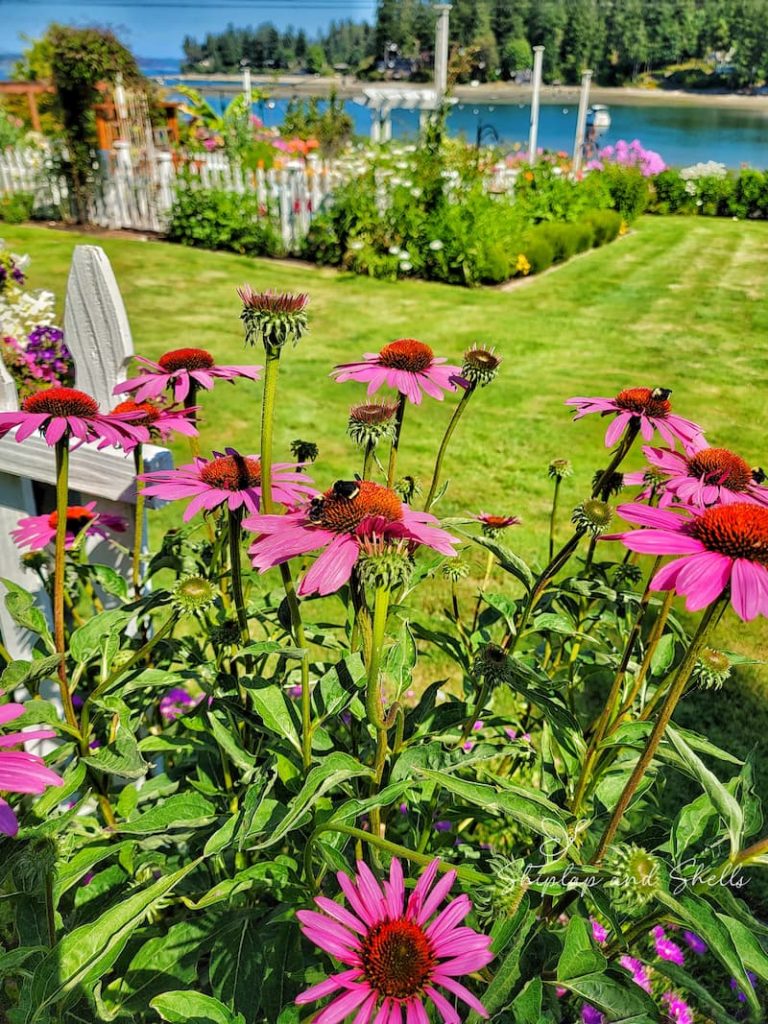
One thing I’ve learned over the years is that good air circulation makes a huge difference in keeping the garden healthy, especially once we hit those warm, humid summer days.
I make a point of trimming and pruning plants as needed to keep some breathing room between them. It not only helps reduce the risk of fungal diseases, but also makes the garden look a little tidier.
If I spot any leaves that are looking questionable (yellowing, spotted, or mildewed), I remove them right away to keep things from spreading.
Take a few minutes to stake or tie up my taller flowers and vining plants. It helps prevent damage when we get those surprise summer wind gusts or heavy rains that can knock things over in a hurry.
Garden Maintenance
Sprinklers and Drip Systems
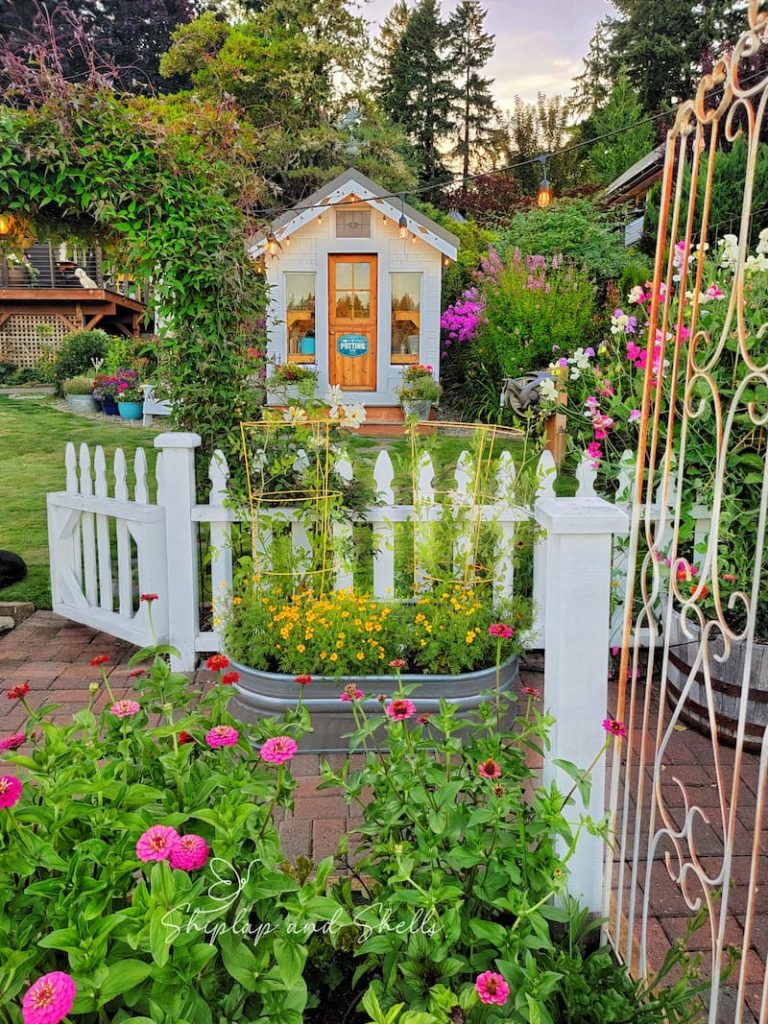
If you’re using a sprinkler or drip irrigation system, now’s a good time to give everything a once-over. I check mine regularly to make sure no emitters are clogged and that water is reaching all the plants that need it. A quick adjustment here and there can save you a lot of headache (and wilted plants) later.
SHOP sprinkler or drip irrigation system.
Support Tall Garden Flowers
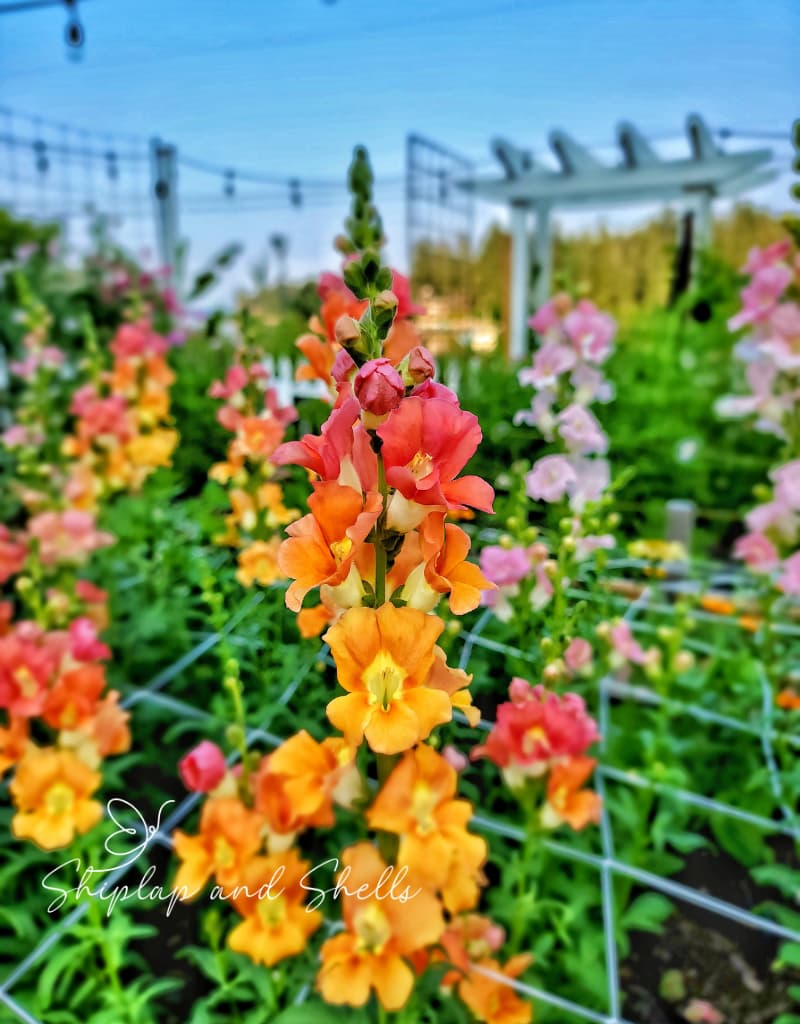
If you haven’t already, now’s the time to support those tall summer bloomers like dahlias, sweet peas, and snapdragons.
Nothing’s worse than coming out after a heavy rain to find your gorgeous flowers flopped over. A simple stake or support can make all the difference in keeping them standing tall.
Spring Bulb Maintenance: Dividing Bearded Iris
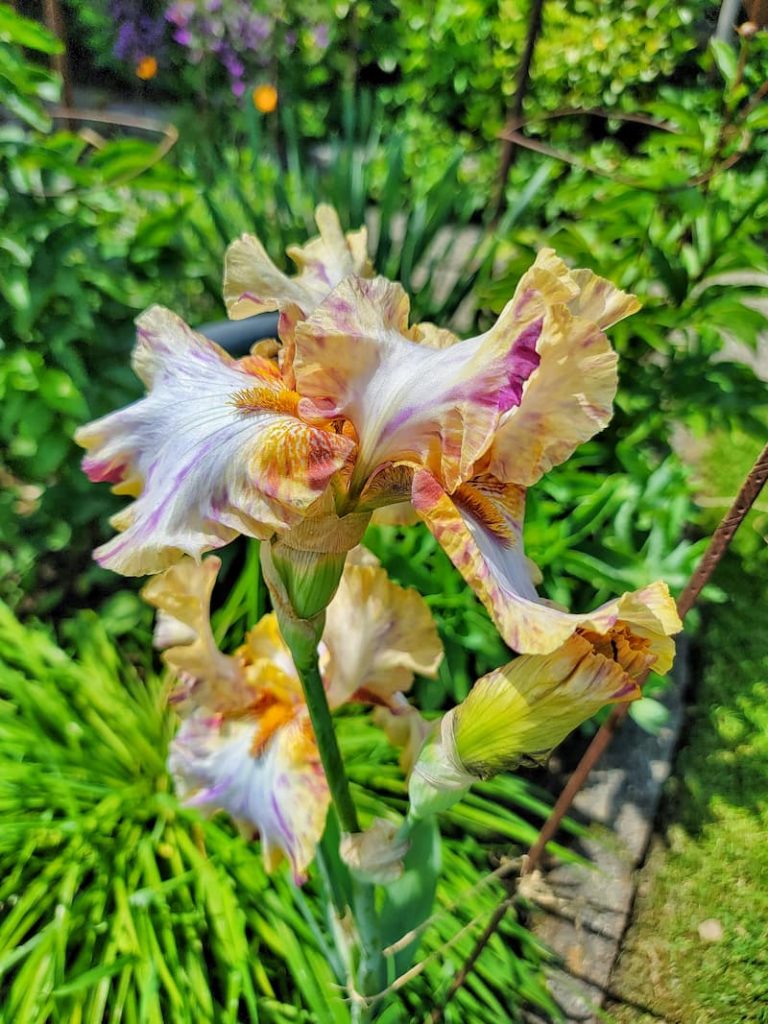
After your bearded irises finish their beautiful spring show, July is the perfect time to divide any crowded clumps. These beauties bloom best on newer growth, so dividing helps keep them flowering year after year.
Here’s how I handle mine:
It’s a little bit of work, but it pays off big time next spring when the blooms come back even better.
Plant and Sow in July
Just because it’s mid-summer doesn’t mean planting season is over. In fact, there’s still plenty you can sow and prep for in the July garden.
Plant Warm Weather-Loving Vegetables and Herbs
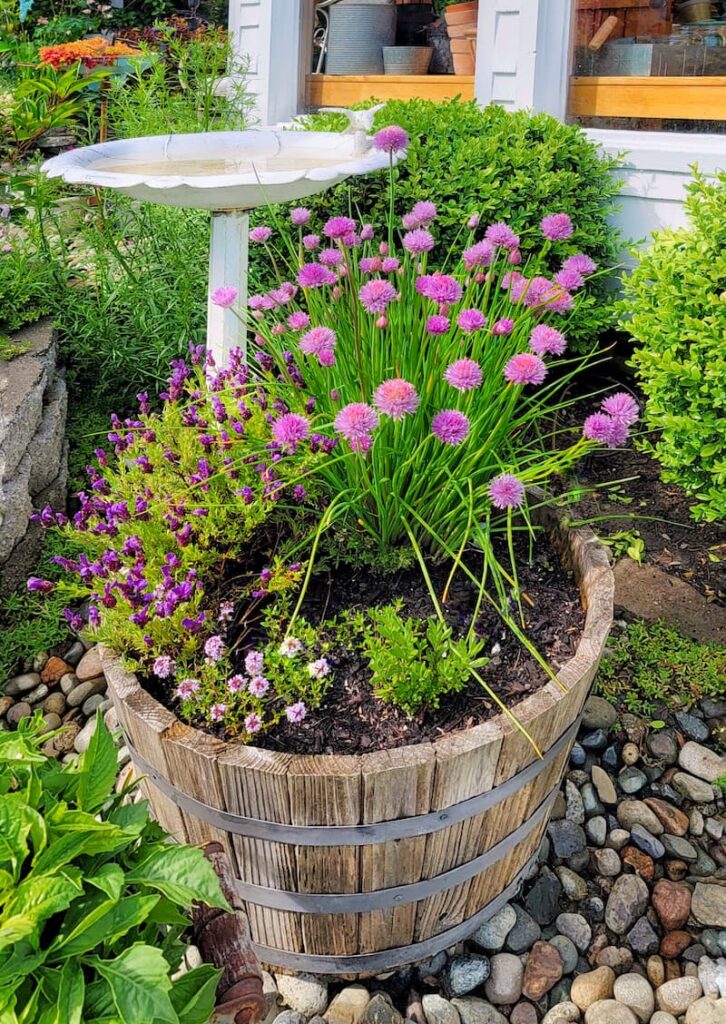
I like to keep things going with succession planting, especially with quick growers like carrots, herbs (chives, basil, parsley), and slow-to-bolt salad greens like Red Cross and Jericho. This way, I can keep harvesting fresh veggies and herbs well into late summer.
When the heat really kicks in, I’ll sometimes use a bit of shade cloth to help keep my carrots, radishes, and other tender veggies from getting too stressed. A little extra protection goes a long way during those hot July stretches.
SHOP for shade cloth.
Sow Seeds for Cool-Season Crops
Believe it or not, now’s also the time to start thinking ahead to your cool-season crops. I try to get my cool-weather seeds directly sown by mid-July so they have time to establish before the weather shifts.
Think leafy greens, root veggies, and even sweet peas if you’re lucky enough to have a long enough fall season.
Order Spring Bulbs to Plant in the Fall
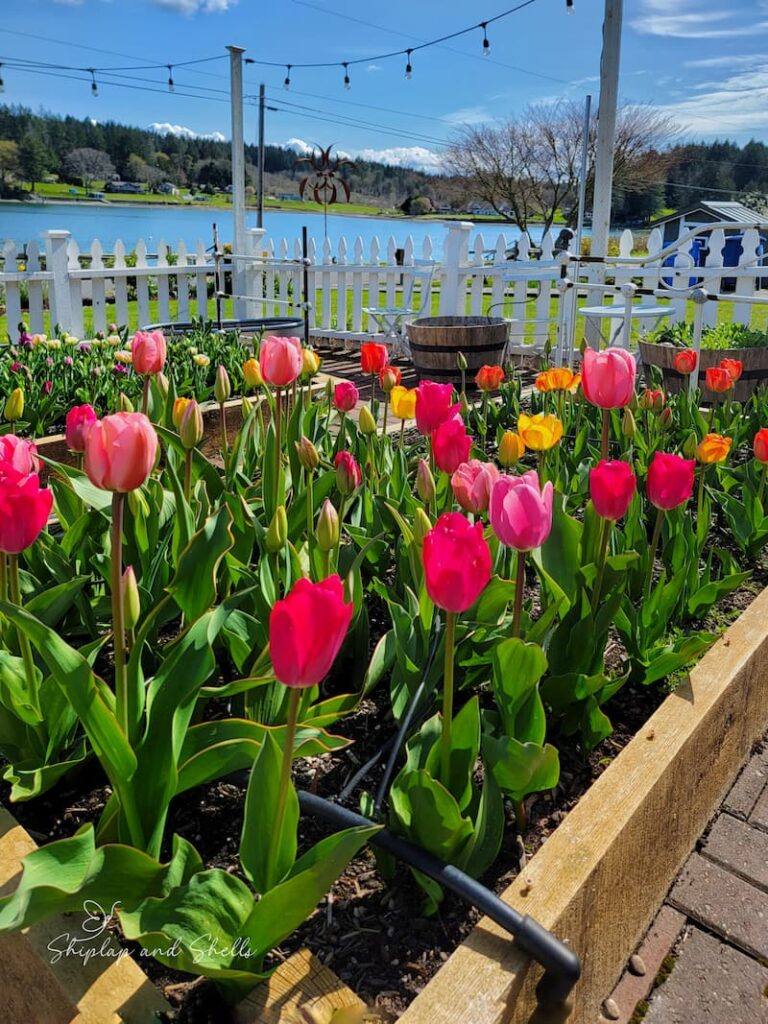
This is my little PSA for anyone who, like me, has learned the hard way: go ahead and order your spring bulbs now. The most popular varieties tend to sell out fast, and ordering in July means you’ll have your bulbs reserved and ready to go when fall planting season arrives.
Start Fall Garden Planning
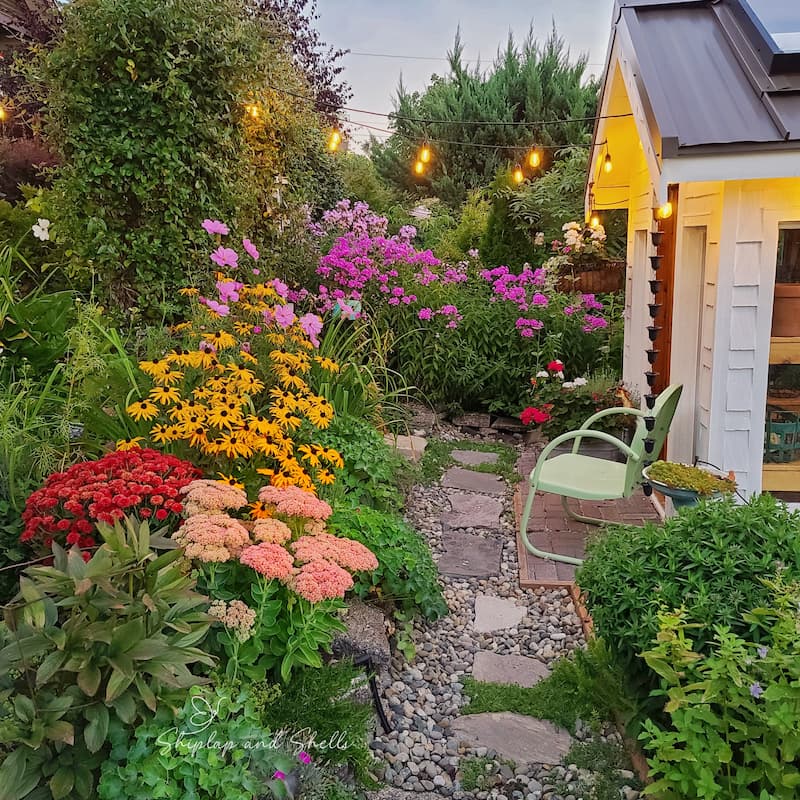
Late July is a great time to start mapping out your fall garden plan.
I take a walk through my beds, make a list of what’s worked, what hasn’t, and what spaces I’ll have available once summer crops finish.
Then I get my soil prepped with a good mix of compost or organic matter to keep the beds healthy, improve moisture retention, and give my fall plantings a strong start.
Final Thoughts On July Gardening
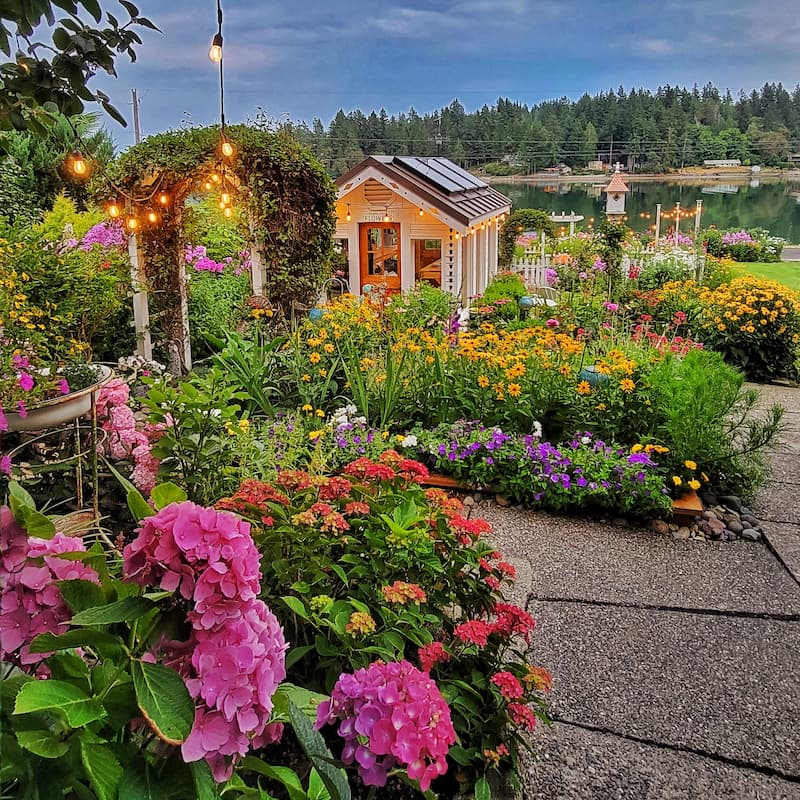
July really is one of my favorite times in the garden, when all the hard work from spring starts to pay off and there’s something new to enjoy every day.
By staying on top of a few simple July gardening tasks, you’ll help your plants thrive, keep the blooms and harvests coming, and set your garden up for success heading into fall.
I hope you’ve found these Pacific Northwest July gardening tips helpful! If you have any questions or want to share what’s happening in your own garden this month, I’d love to hear from you in the comments below.
And if you know a fellow gardener who might find these tips useful, feel free to pass this post along — the more the merrier in the garden!
Until next time,
Happy Gardening

I’m a self-taught hobby gardener. Everything I share on my blog is my opinion and what has worked for me.
MORE POSTS
For You To Enjoy
Follow Me for More Inspiration
Shop my Amazon Storefront, LTK sources, and my favorite home decor, garden, and lifestyle products. When you purchase from one of my links, I earn a small commission, which helps me continue sharing all the content you expect on my blog.
Be sure to follow me on Pinterest, Instagram, Facebook, TikTok and LIKEtoKNOW.it. Do you like gardening? Join my Facebook Gardening Tips & Tricks group.

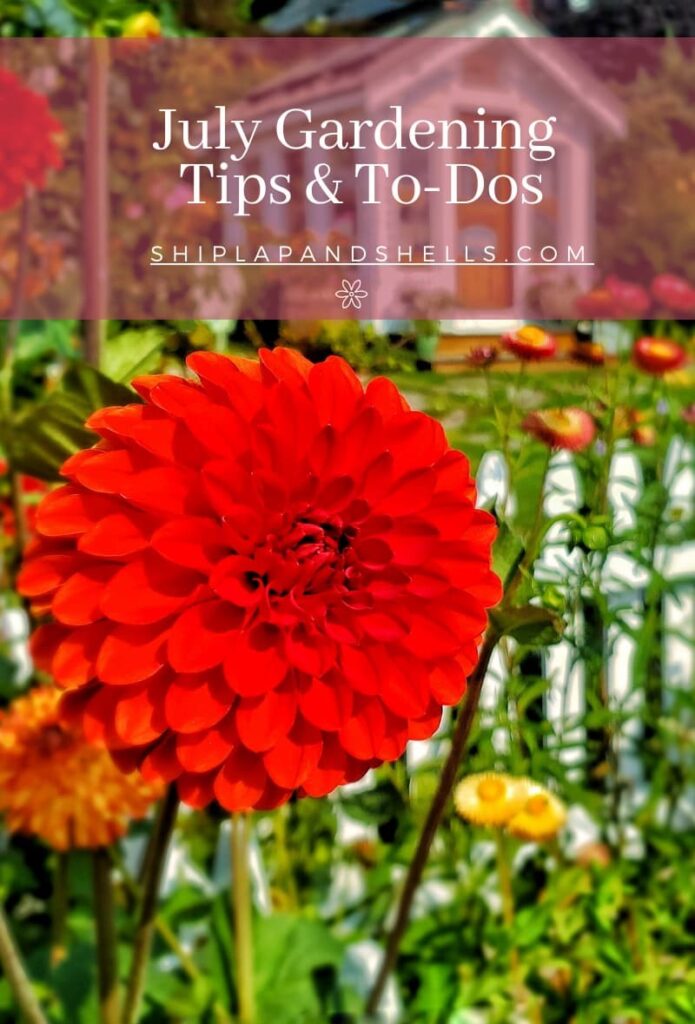


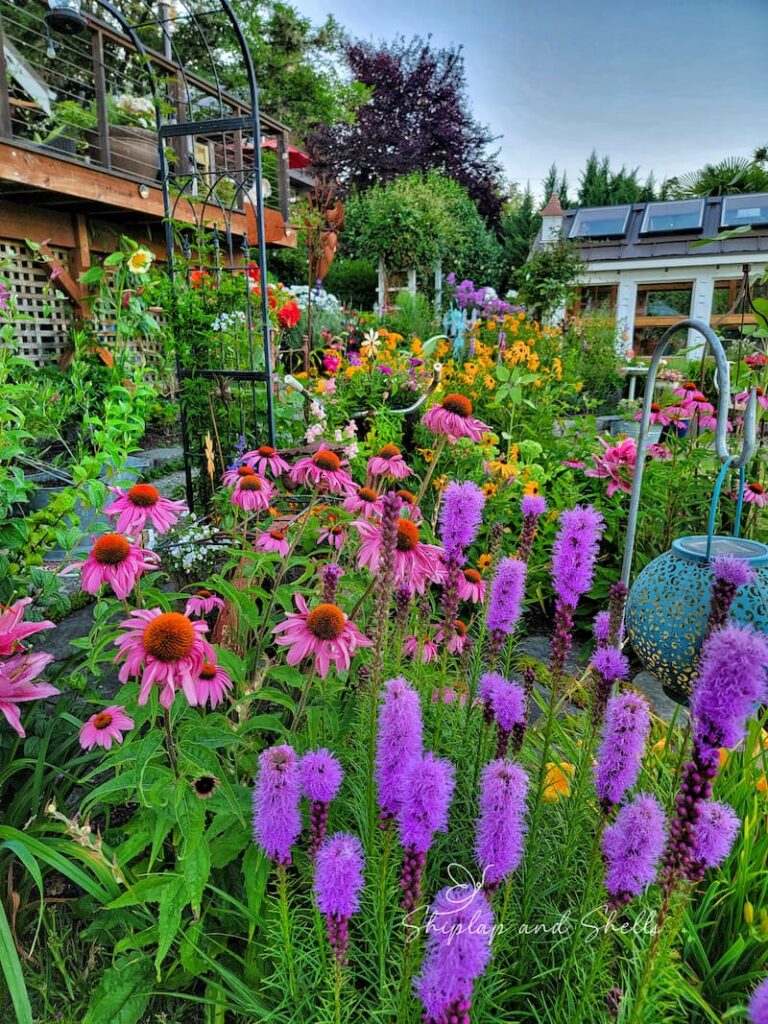
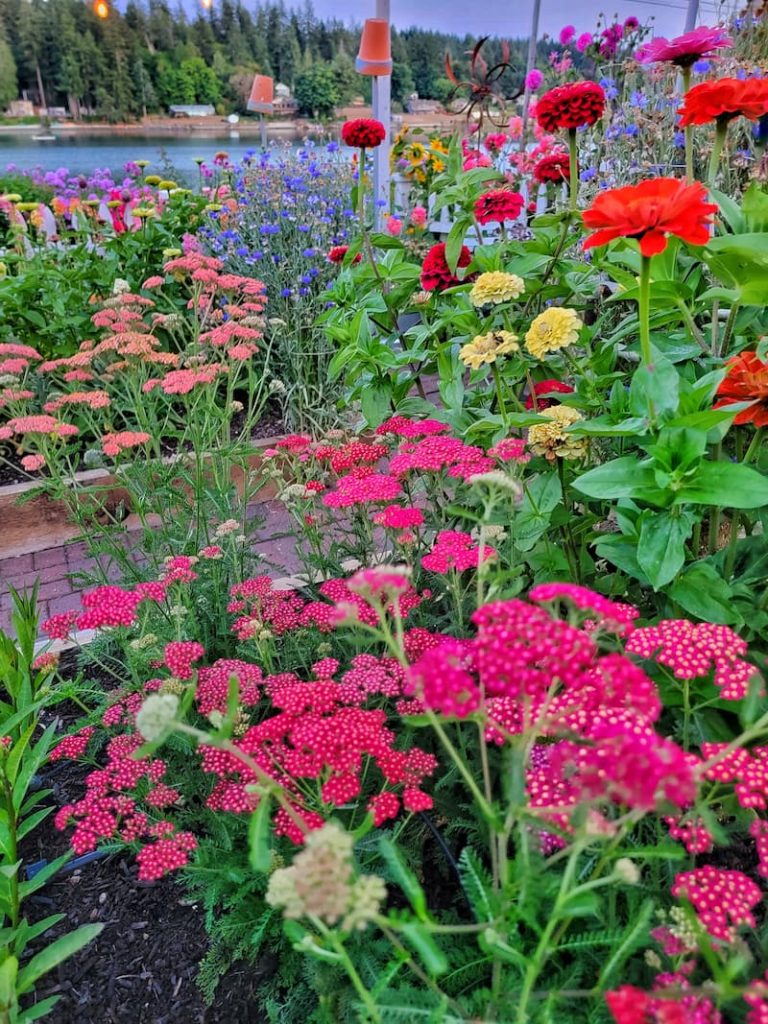
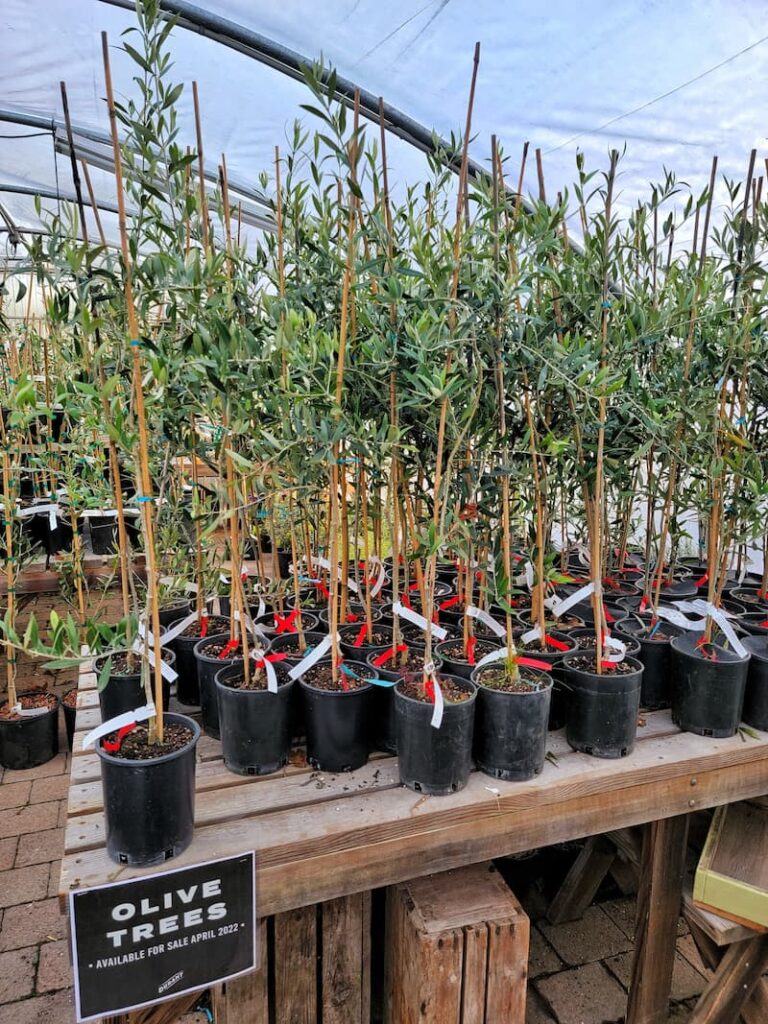
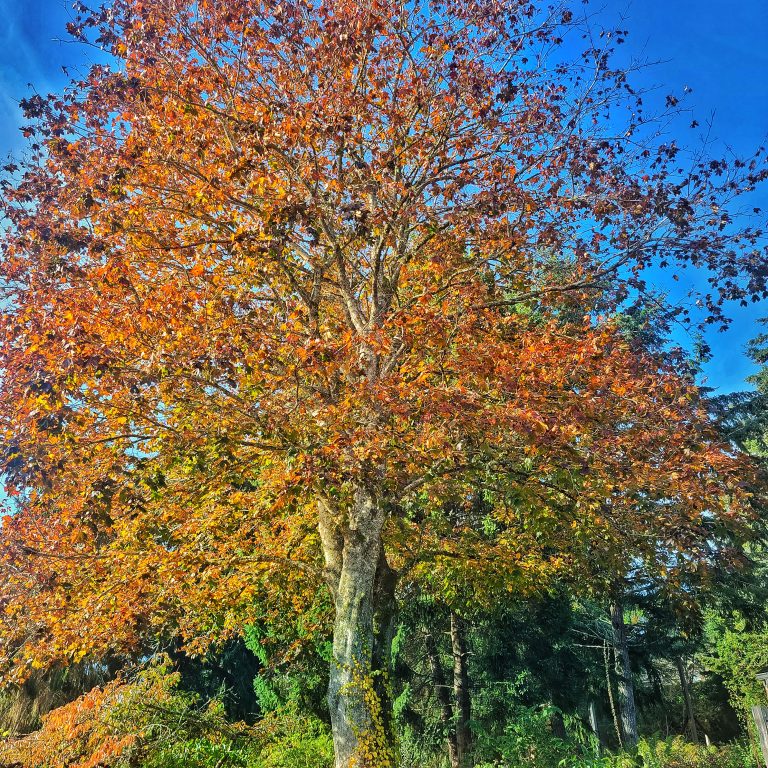

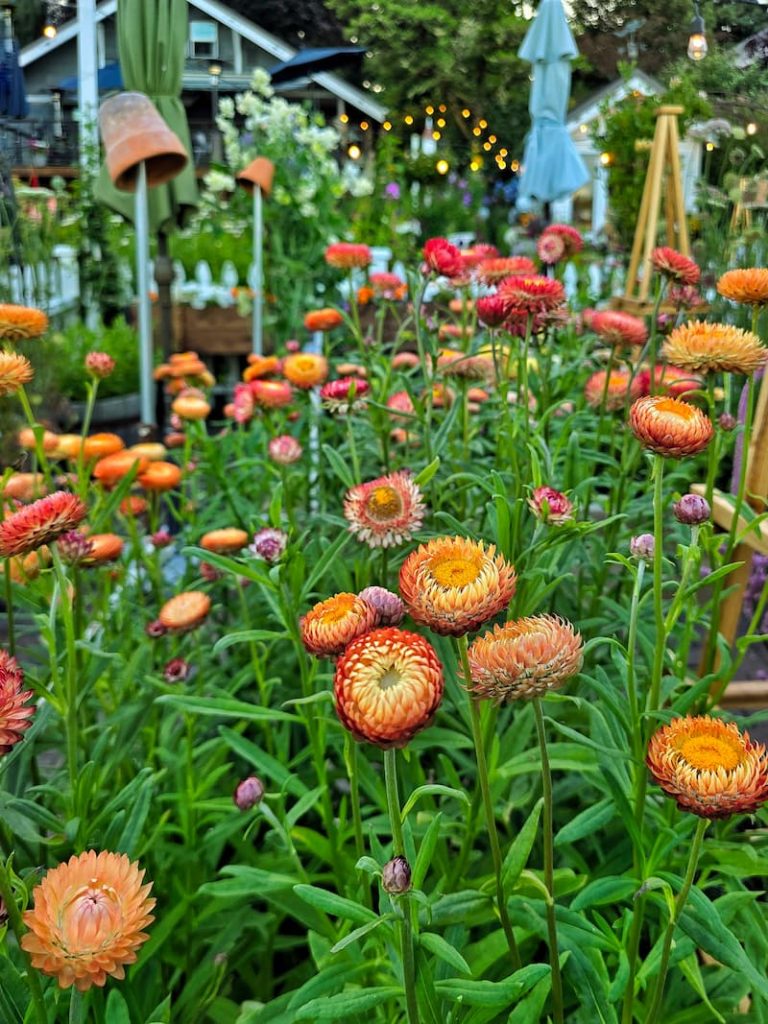
These were all such helpful tips, Kim, thank you! We’ve been having a hard time with slugs on our hydrangeas. It’s crazy hot here so I guess they’re digging down in our container gardens. We also have some really weird black spots on the leaves too so I really appreciate all the different ways you educate us on healthy plants. I need it! Big hugs, CoCo
Great tips Kim! I just cut all of my spring flowering bulbs back about a week or so ago! They were looking like a hot mess. Not anymore! Gardens look gorg! xo
Doesn’t it feel good when the last spring bulb foliage is cut back and your garden looks clean again? Sadly, I am still waiting on some of them to cut back.